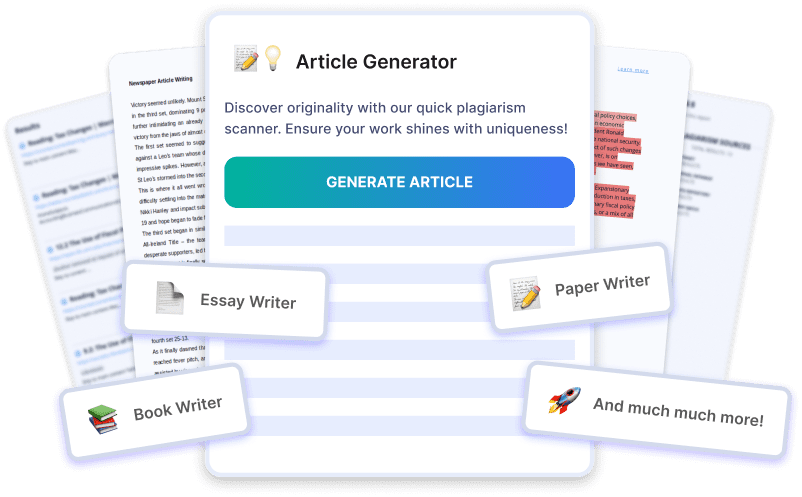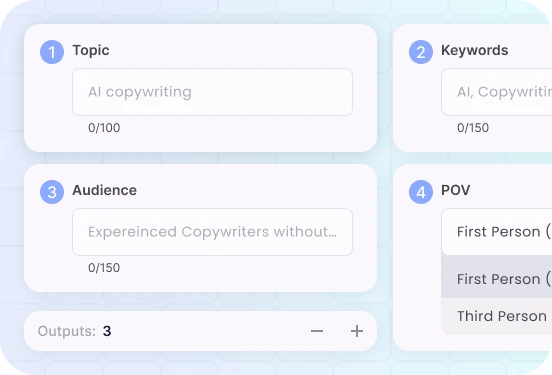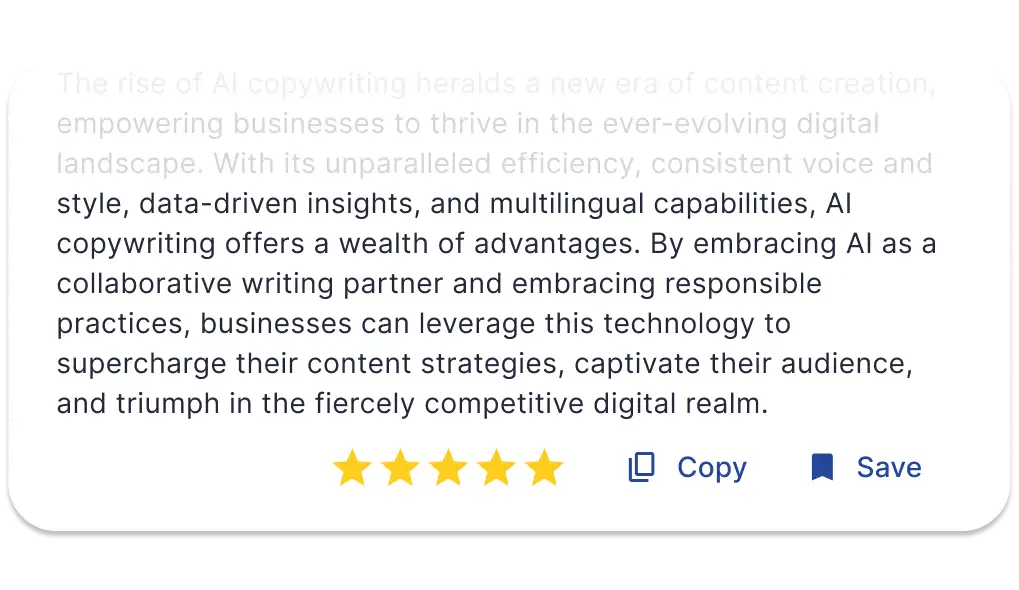Enhance Images with Alt Text
Improve accessibility and SEO rankings by generating descriptive alt text for images with Justdone.ai.
Try Justdone
Key Benefits of Justdone.ai
Boost SEO rankings
Increase your website's visibility on search engines with relevant alt text for images.
Enhance accessibility
Ensure that visually impaired users can understand your content through descriptive image alt text.
Save time
Effortlessly generate alt text for multiple images, saving time and effort.
Maximize SEO with Effective Image Alt Text
Improved Accessibility
By creating descriptive alt text for images, you enhance the accessibility of your website for visually impaired users. Alt text provides a textual alternative to visual content, enabling screen readers to describe images to users who cannot see them. This inclusive approach ensures that all visitors can engage with your content, improving user experience and satisfaction.
Furthermore, implementing alt text aligns with web accessibility standards, demonstrating your commitment to providing an inclusive online environment. This can also have a positive impact on your website's reputation and brand image, as users appreciate businesses that prioritize accessibility.
Try Justdone ->
Boosted SEO Performance
Effective use of alt text can significantly boost your website's SEO performance. Search engines rely on alt text to understand the content of images, which can contribute to improved visibility in image search results. By incorporating relevant keywords into your alt text, you can enhance the relevance and context of your images, increasing the likelihood of them appearing in relevant search queries.
Additionally, descriptive alt text can improve the overall keyword relevance of your web pages, potentially boosting their rankings in organic search results. This can lead to increased organic traffic and improved online visibility for your website.
Try Justdone ->
Enhanced User Engagement
Well-crafted alt text can enhance user engagement by providing additional context and information about the images on your website. When users encounter images with descriptive alt text, they gain a more comprehensive understanding of the content, leading to increased engagement and interaction. This can contribute to lower bounce rates and higher levels of user satisfaction.
Moreover, descriptive alt text can make your content more shareable across social media platforms, as it provides meaningful descriptions that accompany images when shared. This can potentially expand the reach of your content and attract new visitors to your website.
Try Justdone ->
Practical Tips for Creating Effective Alt Text
Be Descriptive and Concise
When creating alt text, ensure that it accurately describes the content and purpose of the image in a concise manner. Use clear and specific language to convey the essential information depicted in the image. Avoid unnecessary details and focus on capturing the most relevant aspects of the visual content.
Concise alt text not only enhances accessibility but also contributes to a better user experience, as it provides quick and informative descriptions that aid in understanding the visual elements on the page.
Incorporate Relevant Keywords
Incorporating relevant keywords into your alt text can improve the discoverability of your images in search engine results. Identify the primary topic or subject of the image and include related keywords that align with the content of the surrounding web page. However, ensure that keyword inclusion is natural and contextually relevant to maintain the integrity of the alt text.
Strategic keyword usage in alt text can contribute to improved SEO performance and increased visibility in relevant search queries.
Avoid Keyword Stuffing
While it is important to include relevant keywords, it is equally crucial to avoid keyword stuffing in alt text. Overloading alt text with excessive keywords can lead to a poor user experience and may be flagged as spammy by search engines. Focus on creating descriptive and meaningful alt text that effectively represents the image without resorting to keyword stuffing.
By maintaining a balance between keyword relevance and readability, you can ensure that your alt text serves its dual purpose of accessibility and SEO enhancement.
Describe Function if Necessary
For images that serve a specific function, such as buttons, icons, or decorative elements, consider including a brief description of their purpose in the alt text. This additional information can provide clarity to users who rely on screen readers or encounter the image in a context where its function may not be immediately apparent.
Including functional descriptions in alt text contributes to a more comprehensive and informative browsing experience for all users.
Review and Update Regularly
Regularly review the alt text across your website to ensure its accuracy and relevance to the corresponding images. As the content or context of your web pages evolves, the alt text should be updated accordingly to maintain its effectiveness. Additionally, stay informed about best practices and evolving accessibility guidelines to ensure that your alt text remains aligned with industry standards.
By routinely reviewing and updating alt text, you can uphold the quality and relevance of your image descriptions, contributing to a consistently enhanced user experience and SEO performance.
How to use Article Generator
- 1
Choose a template
Select the necessary template from the template gallery.

- 2
Provide more details
Fill out the carefully selected inputs to create the best quality of output content.

- 3
Enjoy the results
Copy, save for later, rate the output or hit regenerate button.

Unlocking Alt Text Potential
Discover the power of effective alt text through practical examples and their impact on accessibility and SEO.
Capture the essence of a breathtaking travel photo through descriptive alt text that transports the reader to the scenic location.
As you gaze upon the azure waters of the Mediterranean, envision the sun-kissed coastline dotted with vibrant umbrellas and charming waterfront cafes. The image captures the idyllic beauty of a coastal paradise, inviting you to immerse yourself in the tranquility of this picturesque destination. Feel the warmth of the sun and the gentle sea breeze as you explore the captivating allure of the Mediterranean coastline.
Transport yourself to a world of exploration and discovery as you envision the ancient cobblestone streets adorned with colorful bougainvillea, leading to hidden gems waiting to be uncovered. Embrace the rich history and culture of the Mediterranean region, depicted in the timeless architecture and enchanting landscapes that beckon travelers to create unforgettable memories.
Immerse yourself in the vibrant energy of local markets, where the tantalizing aromas of fresh cuisine intermingle with the vibrant hues of artisanal crafts. Experience the warmth of hospitality and the genuine camaraderie of the local community, as the image encapsulates the essence of a vibrant and welcoming cultural tapestry.
Let the captivating imagery transport you to a place of wonder and serenity, where each element harmoniously intertwines to create a captivating visual narrative. The descriptive alt text serves as a window to an immersive travel experience, inviting readers to embark on a virtual journey through the compelling imagery and evocative descriptions.
By crafting descriptive alt text that captures the emotive essence of the image, you can effectively convey the allure of travel destinations, igniting the imagination of your audience and fostering a deeper connection with your content.
Through evocative alt text, you can transport readers to captivating destinations, infusing your travel blog with immersive storytelling that resonates with the wanderlust of your audience.
Create alt text for a mouthwatering recipe image that entices readers to savor the culinary delights awaiting them.
Indulge in the tantalizing visual feast of a decadent chocolate cake adorned with luscious berries and delicate chocolate curls. Let the rich, velvety texture of the cake and the vibrant burst of fresh berries tantalize your senses, evoking an irresistible craving for the exquisite flavors captured in this delectable dessert.
Envision the artistry of culinary mastery as the image showcases the meticulous craftsmanship and artful presentation of the chocolate cake, inviting you to savor each sumptuous bite. Embrace the harmonious blend of flavors and textures, as the velvety richness of chocolate harmonizes with the vibrant sweetness of the berries, creating a symphony of indulgence.
Immerse yourself in the culinary narrative woven within the image, where the allure of the chocolate cake transcends visual appeal to evoke a sensory journey of culinary delight. The expressive alt text encapsulates the essence of culinary artistry, inviting you to embark on a sensory exploration of flavors and textures.
Let the evocative alt text guide you through a gastronomic odyssey, where the passion for culinary excellence and the celebration of decadent flavors converge to create an immersive culinary experience. Experience the culinary artistry and exquisite flavors that await, as the alt text paints a vivid portrayal of the culinary masterpiece.
By crafting descriptive alt text that captures the essence of culinary artistry, you can entice readers to embark on a sensorial journey through the indulgent flavors and artful presentation of your recipes, creating an immersive culinary experience that resonates with the epicurean spirit.
Through expressive alt text, you can elevate the sensory allure of your recipes, inviting readers to savor the culinary delights and indulge in a gastronomic experience that transcends visual appreciation.